| Date | Text | |
|---|---|---|
18 Jul 0002

Paul Carus |
birth Paul Carus Born 18 Jul 2; died 11 Feb 1919 at age 1916. German-American philosopher. |
|
18 Jul 1627

Oil |
Oil In 1627, French explorers noticed oil seeping out of the ground near Cuba, New York. The phenomenon was described by the Franciscan Missionary Joseph DeLa Roch D'Allion, which was the first recorded mention of oil on the North American Continent. The Seneca Oil Spring is located near the spillway end of Cuba Lake on the Oil Spring Indian Reservation. |
|
18 Jul 1635
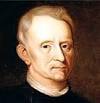
Robert Hooke |
birth Robert Hooke Born 18 Jul 1635; died 3 Mar 1703 at age 67. English physicist who discovered the law of elasticity, known as Hooke's law, and invented the balance spring for clocks. He was a virtuoso scientist whose scope of research ranged widely, including physics, astronomy, chemistry, biology, geology, architecture and naval technology. On 5 Nov 1662, Hooke was appointed the Curator of Experiments at the Royal Society, London. After the Great Fire of London (1666), he served as Chief Surveyor and helped rebuild the city. He also invented or improved meteorological instruments such as the barometer, anemometer, and hygrometer. Hooke authored the influential Micrographia (1665). |
|
18 Jul 1650
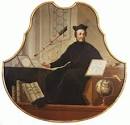
Christoph Scheiner |
death Christoph Scheiner Died 18 Jul 1650 at age 74 (born 25 Jul 1575). German astronomer. |
|
18 Jul 1689

Samuel Molyneux |
birth Samuel Molyneux Born 18 Jul 1689; died 13 Apr 1728 at age 38. British astronomer (Royal Observatory at Kew) and politician. Together with assistant James Bradley, he made measurements of abberation - the diversion of light from stars. They made observations of the star  Draconis with a vertical telescope. Starting in 1725 they had the proof of the movement of the earth giving support to the Copernican model of the earth revolving around the sun. The star oscillated with an excursion of 39 arcsecs between its lowest declination in May and its the highest point of its oscillation in September. He was unfortunate to fall ill in 1728 and into the care of the Anatomist to the Royal Family, Dr Nathaniel St Andre, whose qualifications were as a dancing master. Molyneux died shortly thereafter. |
|
18 Jul 1720

Gilbert White |
birth Gilbert White Gilbert White, English naturalist (died 1793) |
|
18 Jul 1768

Jean-Robert Argand |
birth Jean-Robert Argand Born 18 Jul 1768; died 13 Aug 1822 at age 54. Swiss accountant and mathematician who was one of the earliest to use complex numbers, which he applied to show that all algebraic equations have roots. His name is associated with the Argand diagram, a geometrical representation of complex numbers as points in a Cartesian plane, with the real portion of the number on the x axis and the imaginary part on the y axis. He self-published this concept in an anonymous monograph (1806). Though talented in mathematics, he remained an amateur; his livelihood was as an accountant and bookkeeper. Although Argand's name became associated with this idea, the geometrical interpretation of complex numbers appeared earliest in work by Caspar Wessel (1787), first presented on 10 Mar 1797 to a the Royal Danish Academy of Sciences and published in 1799. |
|
18 Jul 1769

Nobuhiro Sato |
birth Nobuhiro Sato Born 18 Jul 1769; died 17 Feb 1850 at age 80. Japanese scientist and an early advocate of Westernization in Japan. He favoured the development of an authoritarian type of government based on Western science and political institutions. As an agronomist, Satô Nobuhiro wrote in Keizai yôryaku (The Epitome of Economy), "The rationale of economy is to manage the realm, develop goods, make domains affluent, and succor everyone." In short, economy was the know-how to succour people. Sato Nobuhiro, held the European powers to be a threat, and advocated economic reform so that Japan could build up its military to stave off the Western menace. Even this contrary perspective advocated expansionism much like the Imperialism of the European nations. Also prevalent in his writings are the call for urgent and drastic change in the Japanese system. He advocated for the development of transportation and for a government agency to fund such developments in order to encourage the nation's commerce. |
|
18 Jul 1838

Pierre-Louis Dulong |
death Pierre-Louis Dulong Died 18 Jul 1838 at age 53 (born 12 Feb 1785). French chemist and physicist who helped formulate the Dulong-Petit law of specific heats (1819), which proved useful in determining atomic weights. He began in a medical career, but turned to botany and then chemistry. In 1811, he discovered nitrogen trichloride, losing a finger and the sight of one eye when it spontaneously exploded. Jointly with Alexis Petit (1815-20), they measured the specific heat of elements and related them to atomic weights. They discovered their new law that specific heat times atomic weight of an element is a constant, about six calories per gram atom, the same for all solid elements. |
|
18 Jul 1853

N. American International Railroad |
N. American International Railroad In 1853, trains begin running over the first North American international railroad between Portland, Maine and Montreal, Quebec. St. Lawrence & Atlantic Railroad/ Canadian National Railroad was first proposed in 1843, when John A. Poor of Portland advocated building a railway from Montreal to Portland in conjunction with a railroad through Maine east to Saint John, New Brunswick and Halifax, Nova Scotia. This resulted in the formation of the Atlantic & St. Lawrence Railroad in Maine which is today known as the St. Lawrence & Atlantic Railroad. The railroad was opened for ttraffic on Jul 18, 1853 and was taken over by the Grand Trunk the same year. |
|
18 Jul 1853

Hendrik Antoon Lorentz |
birth Hendrik Antoon Lorentz Born 18 Jul 1853; died 4 Feb 1928 at age 74. Dutch physicist who shared (with Pieter Zeeman) the Nobel Prize for Physics in 1902 for his theory of the influence of magnetism upon electromagnetic radiation phenomena. The theory was confirmed by findings of Zeeman and gave rise to Albert Einstein's special theory of relativity. From the start, Lorentz made it his task to extend James Clerk Maxwell's theory of electricity and of light. Already in his doctor's thesis, he treated the reflection and refraction phenomena of light from this new standpoint. His fundamental work in the fields of optics and electricity revolutionized conceptions of the nature of matter. In 1878, he published an essay relating the velocity of light in a medium, to its density and composition. |
|
18 Jul 1853

Hendrik Lorentz |
birth Hendrik Lorentz Hendrik Lorentz (died 1928), Dutch physicist and Nobel laureate. |
|
18 Jul 1860
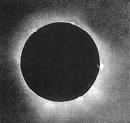
First series of photographs of solar eclipse |
First series of photographs of solar eclipse In 1860, a series of photographs of a total solar eclipse was made by Warren De la Rue (1815-1889) in Spain, and by Father Angelo Secchi at another location 500-km away. The value of photography as a means of investigating the solar appendages was demonstrated when the images were compared at various stages of the eclipse. The moon was clearly seen to advance over the “red protuberances” and settle forever that they belonged to the sun and and not the moon. |
|
18 Jul 1860

solar eclipse |
solar eclipse (astronomy) Total solar eclipse. Warren De La Rue's photographs of this event, taken in Spain, together with those of Angelo Secchi, demonstrate the solar character of the prominences or red flames seen around the limb of the moon during such an eclipse. |
|
18 Jul 1861

Kadambini Ganguly |
birth Kadambini Ganguly Kadambini Ganguly (died 1923), Indian physician. |
|
18 Jul 1869

Charles Palache |
birth Charles Palache Born 18 Jul 1869; died 5 Dec 1954 at age 85. American mineralogist who was one of the most eminent crystallographers and mineralogists of the world, he lived in a period of revolutionary developments in mineralogical science. At the University of California (PhD 1887), he did the field work for the first geologic maps of the San Francisco Peninsula and the Berkley area. In 1895, while at Heidelberg taking courses in petrography, he was introduced to morphological crystallography by Victor Goldschmidt. Palache threw himself with enthusiasm into the study of crystals, and laid the foundation for the work he pursued vigorously for the next fifty-five years. |
|
18 Jul 1876

Industrial pollution |
Industrial pollution In 1876, a Royal Commission on Noxious Vapours was appointed by the British government to inquire into the management of chemical works, to determine the effects of certain gases and vapours emitted, and investigate means of prevention. The Commission inspected alkali works, cement works, chemical manure works, copper, glass, lead, salt and metal works, coke ovens and potteries. In their report, issued in Aug 1878, they recommended increasing the number of visits by inspectors, recording any escapes of gases, the publication of inspectors' reports, and more stringent regulations, despite witnesses arguing that noxious vapours were the inevitable and unalterable cost of national prosperity. |
|
18 Jul 1884
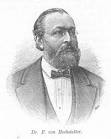
Ferdinand von Hochstetter |
death Ferdinand von Hochstetter Ferdinand von Hochstetter (born 1829), German geologist. |
|
18 Jul 1889

Axel Boëthius |
birth Axel Boëthius Axel Boëthius (died 1969), Swedish archeologist of Etruscan culture. |
|
18 Jul 1892

Waldemar Haffkine |
Waldemar Haffkine (medicine) Russian-born bacteriologist Waldemar Haffkine demonstrates the first anti-cholera vaccine. |
|
18 Jul 1900

Johann Gustav Christoffer Kjeldahl |
death Johann Gustav Christoffer Kjeldahl Died 18 Jul 1900 at age 50 (born 16 Aug 1849). who originated the Kjeldahl method for the laboratory determination of the nitrogen content in organic compounds. This was of great value for applications in agriculture, medicine and drug manufacture. It replaced the former procedure that were inexact and time-consuming, and remains in use to the present time. From 1876 until his death, he was the director of the Carlsberg laboratory (a research institution of the Carslberg brewery). He developed his method of measuring nitrogen content to investigate the amount of protein in grain, which was relevant to protein transformation during beer fermentation. The method was reported to the Chemical Society of Copenhagen on 7 Mar 1883. |
|
18 Jul 1921
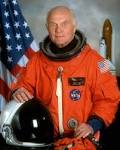
John Herschel Glenn Jr. |
birth John Herschel Glenn Jr. Born 18 Jul 1921. American astronaut and statesman. |
|
18 Jul 1921

BCG |
BCG (medicine) The first BCG vaccination against tuberculosis. |
|
18 Jul 1922

Thomas S. Kuhn |
birth Thomas S. Kuhn Born 18 Jul 1922; died 17 Jun 1996 at age 73. Thomas Samuel Kuhn was an American science historian and science philosopher was a MIT professor, noted for his highly influential The Structure of Scientific Revolutions (1962). He held that science was not a steady, cumulative acquisition of knowledge, but it is “a series of peaceful interludes punctuated by intellectually violent revolutions.” Then appears a Lavoisier or an Einstein, often a young scientist not indoctrinated in the accepted theories, to sweep the old paradigm away. Such revolutions, he said, came only after long periods of tradition-bound normal science. He pointed out that scientific research and thought are defined by “paradigms,” or trusted theories, concepts, methods and experiments. Such paradigms are accepted by scientists, who continue to extend, refine, explain and measure results until they meet an problem that cannot be resolved within the established framework. Such anomaly or contradiction eventually requires an intellectual revolution, such as the paradigm shifts from Ptolemaic cosmology to Copernican heliocentrism. “Frameworks must be lived with and explored before they can be broken.” |
|
18 Jul 1922

Thomas Kuhn |
birth Thomas Kuhn Thomas Kuhn (died 1996), American philosopher of science. |
|
18 Jul 1931

Oskar Minkowski |
death Oskar Minkowski Died 18 Jul 1931 at age 73 (born 13 Jan 1858). German physiologist and pathologist who introduced the concept that diabetes results from suppression of a pancreatic substance (later found to be the hormone insulin). After studying how fat is metabolized by the body, in 1889, Oskar Minkowski and Joseph von Mering uncovered the role of the pancreas in diabetes. In an experiment in which they removed the pancreas from a dog, it consequently developed diabetes. He was the brother of mathematician Hermann Minkowski (whose idea of a four-dimensional or "Minkowski space", laid the mathematical foundation of Albert Einstein's general theory of relativity). Oskar's son, Rudolf Minkowski was a physicist and astronomer. |
|
18 Jul 1937

Roald Hoffmann |
birth Roald Hoffmann Born 18 Jul 1937. Polish-born American chemist, corecipient, with Fukui Kenichi of Japan, of the Nobel Prize for Chemistry in 1981 for their independent investigations of the mechanisms of chemical reactions. His work aims at theoretically anticipating the course of chemical reactions. It is based on quantum mechanics (the theory whose starting point is that the smallest building blocks of matter may be regarded both as particles and as waves), which attempts to explain how atoms behave. Orbital interaction and symmetry relations between molecules or parts of molecules are fundamental to this theory of conservation of orbital symmetry in chemical reactions. |
|
18 Jul 1942
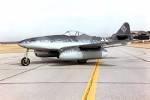
Messerschmitt Jet |
Messerschmitt Jet In 1942, Messerschmitt Me 262 Schwalbe, Germany's first operational jet fighter, takes first flight. The Me262 surprised the Allies with its speed advantage - around 100 or more miles per hour. Although it could still be intercepted by Allied piston-engine fighters, when the Nazi jet was at speed it could escape an enemy. However, introduced near the end of World War II, and with limited numbers available, the Me 262 had limited effect on the progress of the war. |
|
18 Jul 1942
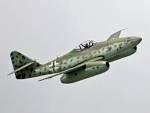
Messerschmitt Me 262 |
Messerschmitt Me 262 (technology) Messerschmitt Me 262 jet aircraft prototype makes its first flight under jet power. |
|
18 Jul 1946
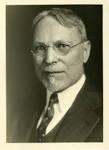
Charles Hubbard Judd |
death Charles Hubbard Judd Died 18 Jul 1946 at age 73 (born 20 Feb 1873). American psychologist who was a leader adopting the scientific method in the study and reform of education. His own research included the nature and development in reading, language, number ideas and their development, writing, and the higher mental processes. He examined the psychological issues of school curriculum and the pedagogical methods used in education. He believed an overarching educational objective was to developing the learner's social consciousness, rather than the expression of an individual's instinct, but to participate in a cooperative social experience. He filed an affidavit at the Scope's trial in strong support of the teaching of evolution in schools. |
|
18 Jul 1958

Henri Farman |
death Henri Farman Died 18 Jul 1958 at age 84 (born 26 May 1874). French aviator and aircraft designer who developed ailerons (1908) to solve the enormously difficult and dangerous problems of lateral control. His an innovation subsequently came into general use on all planes. His first steps in aircraft design began in 1907 when he ordered his own aircraft incorporating his design modifications of a dihedral in the wings and the reduction of the tail to a single plane. These intuitive rather than scientific modifications were the beginning of a long career in which Farman diagnosed and solved a myriad of aircraft control and structural problems. The Farman “Goliath” was the first long-distance passenger airliner, beginning regular Paris–London flights on 8 Feb 1919. His younger brother Maurice Farman was also an aviator. They were born of English parents in Paris. |
|
18 Jul 1963
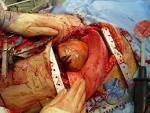
Heart Surgery |
Heart Surgery In 1963, the first implantation of an intrathoracic left artificial ventricle in a human being was made by Dr. E. Stanley Crawford, at the Baylor University College of Medicine, Methodist Hospital, Houston Tx. USA. The original prototype is kept and exhibited at the Smithsonian Institution, Washington, DC. Within a few years, on 4 Apr 1969, the first total artificial heart was implanted, used as a bridge to heart transplantation by Dr. Denton A. Cooley, at the Texas Heart Institute, Houston Tx. USA. |
|
18 Jul 1968

Intel incorporates |
Intel incorporates In 1968, the Intel Corporation, inventor of the microchip, was incorporated. In 1968, a Hungarian immigrant by the name of Andy Grove co-founded Intel with a collaboration of colleagues with the same interest, to revolutionize the computer world. In 1971, Intel released its first microprocessor, the 4004 designed for a calculator. In 1972 came the more powerful 8008. With the introduction of the 8080 in 1974, the first personal computers were made possible. |
|
18 Jul 1968

Intel founded |
Intel founded In 1968, Intel Corporation was founded by Gordon E. Moore and Robert Noyce, originally incorporated as “NM Electronics.” The familiar short name, based on “Integrated Electronics” was adopted later in the year. In 1969, its first product was a RAM (random access memory) chip. By 1974, they introduced the 8080 microprocessor, which was quickly adopted in hundreds of products, including traffic lights, cash registers, and the earliest personal computers (such as the Altair 8800 hobbyist kit in 1975). Intel has grown to become the world's largest semiconductor chip maker (by revenue). |
|
18 Jul 1968

Corneille Heymans |
death Corneille Heymans Died 18 Jul 1968 at age 76 (born 28 Mar 1892). Belgian physiologist who received the Nobel Prize for Physiology or Medicine in 1938 for his discovery of the regulatory effect on respiration of sensory organs associated with the carotid artery in the neck and with the aortic arch leading from the heart (1927-29). |
|
18 Jul 1968

semiconductor chip |
semiconductor chip (computer science) The semiconductor chip company Intel is founded by Gordon E. Moore and Robert Noyce in Mountain View, California. |
|
18 Jul 1986

Titanic explored |
Titanic explored In 1986, videotapes, taken by the deep-sea Alvin submersible, showing Titanic's remains were released. Looking like huge stalagmites rusticles ("rust icicles"), are a byproduct of the bacteria slowly converting the iron in the hull. The colony of iron-eating bacteria flourish in the anaerobic (without oxygen) environment inside the hollow multi-layered rusticles while on the outside, porous layers support oxygen-dependent bacteria. In this eerie way, there is still life on the Titanic as the ship lies deep on the ocean floor. |
|
18 Jul 1990

Mir |
Mir In 1990, the airlock hatch on the Soviet space station Mir could not be closed by the cosmonauts returning after a seven-hour space walk making an exterior inspection and repairs. The hatch had been damaged when it was pushed back on its hinges by residual air escaping when the cover was opened to begin the spacewalk. Instead, Anatoly Solovyov and Aleksandr Balandin stayed behind an interior airlock in another part of the station for eight days. After their next spacewalk to continue repairs on 26 Jul, they managed to secure the hatch and repressurize as normal. |
|
18 Jul 1990
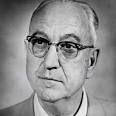
Karl Augustus Menninger |
death Karl Augustus Menninger Died 18 Jul 1990 at age 96 (born 22 Jul 1893). American physician, who with his father, Charles Frederick Menninger and younger brother, pioneered methods of psychiatric treatment in the 20th century. In group practice, they established facilities that linked two concepts: the psychoanalytic understanding of behaviour as applied to the treatment of hospitalized patients, and the use of the social environment of the hospital as an adjunct to therapy. In 1941, To fulfill their goal to combine medical practice, research, and education, the family formed the Menninger Foundation in 1941 and four years later the Menninger School of Psychiatry. The foundation has been extensively involved in psychiatric education, training, and research. |
|
18 Jul 1994
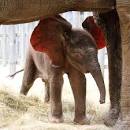
Artificial insemination birth |
Artificial insemination birth In 1994, Rosanna Della Corte, a 62-year-old Italian woman, gave birth to a healthy son, Riccardo. Her egg was artificially imseminated by the sperm of her 63-year-old husband, Mauro, at Dr. Severino Antinori's fertility clinic in Rome, Italy. Rosanna Della Corte had earlier lost her only son at 17 in a terrible car accident. She had often tried to adopt another son, but in vain. These were the reasons she turned to the procedure. In reaction, restrictions were introduced in the Italian legislature in the wake of a papal encyclical, Evangelium Vitae, condemning in vitro fertilization and many of other high-tech fertility procedures. |
|
18 Jul 1996
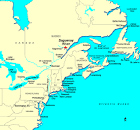
Saguenay River |
Saguenay River (meteorology) Storms provoke severe flooding on the Saguenay River in Quebec, in one of Canada's most costly natural disasters. |
|
18 Jul 1997

Gene Shoemaker |
death Gene Shoemaker Died 18 Jul 1997 at age 69 (born 28 Apr 1928). Eugene Merle Shoemaker was an American planetary geologist. Shoemaker initiated and vigorously promoted the intensive geologic training of the astronauts that made them able scientific observers and reporters on moon landings. He was a major investigator of the imaging by unmanned Ranger and Surveyor satellites which, before any Apollo landing, revealed the nature of the Moon's cover of soil and broken rock that he named the regolith. He codiscovered Comet P/Shoemaker-Levy 9 which collided with Jupiter (1994), the first observed collision of two solar system bodies. He died in a car crash. In tribute, a small capsule of his ashes were launched in a memorial capsule aboard Lunar Prospector to the moon. |